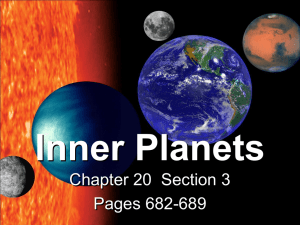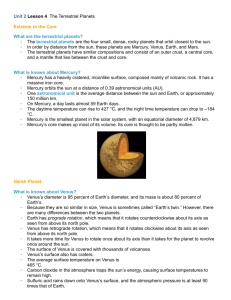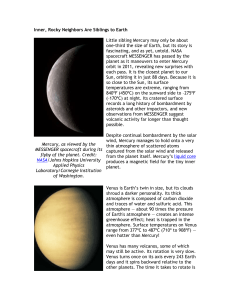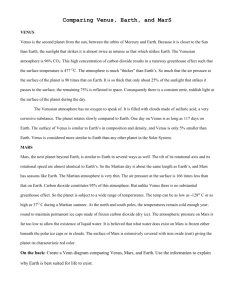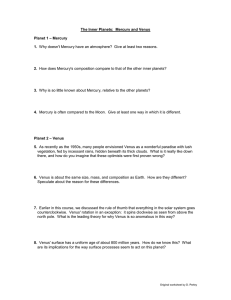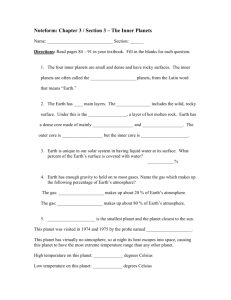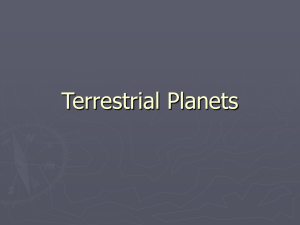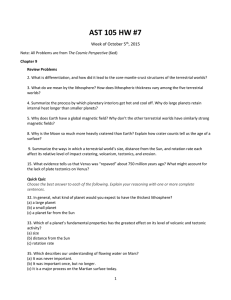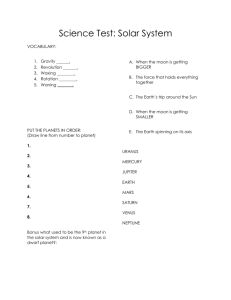23_2 - Aquinas High School
advertisement
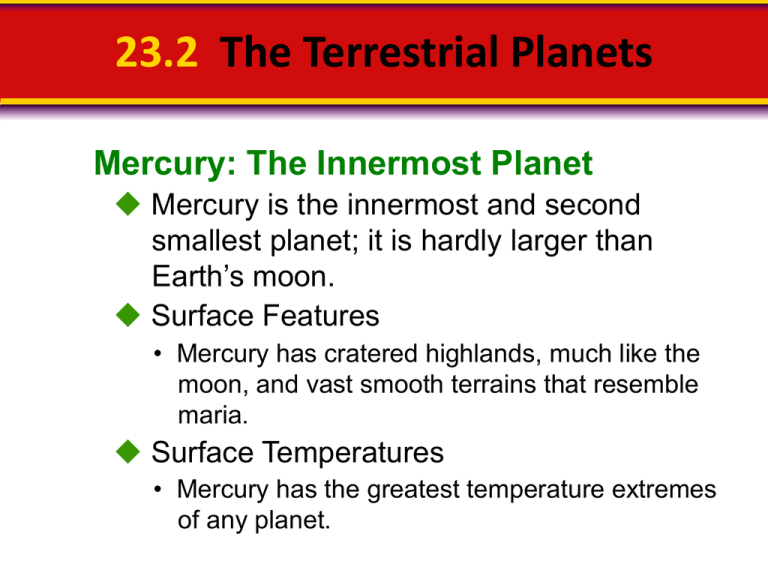
23.2 The Terrestrial Planets Mercury: The Innermost Planet Mercury is the innermost and second smallest planet; it is hardly larger than Earth’s moon. Surface Features • Mercury has cratered highlands, much like the moon, and vast smooth terrains that resemble maria. Surface Temperatures • Mercury has the greatest temperature extremes of any planet. 23.2 The Terrestrial Planets Venus: The Veiled Planet Surface Temperatures • The surface temperature of Venus reaches 475oC, and its atmosphere is 97 percent carbon dioxide. 23.2 The Terrestrial Planets Venus: The Veiled Planet Venus is similar to Earth in size, density, mass, and location in the solar system. Thus, it has been referred to as “Earth’s twin.” Surface Features • Venus is covered in thick clouds that visible light cannot penetrate. • About 80 percent of Venus’s surface consists of plains covered by volcanic flow. 23.2 The Terrestrial Planets Mars: The Red Planet The Martian Atmosphere • The Martian atmosphere has only 1 percent of the density of Earth’s. • Although the atmosphere of Mars is very thin, extensive dust storms occur and may cause the color changes observed from Earth. Surface Features • Most Martian surface features are old by Earth standards. The highly cratered southern hemisphere is probably 3.5 billion to 4.5 billion years old. 23.2 The Terrestrial Planets Mars: The Red Planet Water on Mars • Some areas of Mars exhibit drainage patterns similar to those created by streams on Earth. • Images from the Mars Global Surveyor indicate that groundwater has recently migrated to the surface.


